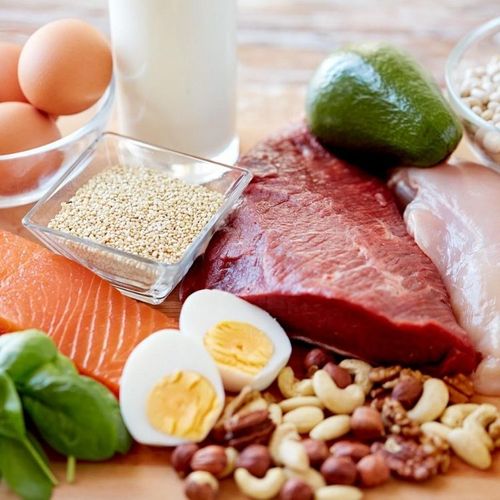Weight loss isn't only-or even mainly about calories. Surprisingly, we gain weight when natural weight-control mechanisms are disrupted by low-grade inflammation that is caused by poor diet and environmental toxins.
When people gain weight, the extra fatty tissue produces leptin, a hormone that suppresses appetite and speeds metabolism. In theory, this should cause people to lose the extra weight.
Instead, inflammation in fat tissue and blood vessels stimulates the production of chemicals that disable leptin's ability to suppress appetite and speed metabolism. This is called leptin resistance.
To combat leptin resistance, I have developed a fat-resistance diet based on cutting-edge research at premier institutions such as Harvard, Johns Hopkins and Rockefeller universities. Eating the proper foods can eliminate chronic inflammation and reprogram the body's weight loss mechanisms.
Anti-Inflammatory Foods
The focus of the diet isn't calorie control. The idea is to eat foods that supply anti-inflammatory nutrients. A major problem of most weight loss diets is the use of artificial sweeteners and fat substitutes to reduce calories. Substituting these products for real foods deprives your body of key anti-inflammatory nutrients. Main principles...
Eat fish at least three times weekly. The omega-3 fatty acids in fish have powerful anti-inflammatory properties. Fish that are rich in omega-3s and relatively low in mercury include anchovies, conch, herring (fresh or pickled, not creamed), mackerel (Atlantic only), sablefish, salmon (fresh, canned or smoked, wild or farmed), sardines (Atlantic), sturgeon and tuna (fresh or canned bluefin-not albacore).
Balance essential fatty acids. The optimal ratio of omega-6 fatty acids to omega-3s is approximately 4:1.The ratio in the average American diet is closer to 20:1. A relative excess of omega-6 fats in tissues causes cells to produce excessive levels of pro-inflammatory chemicals called prostanoids. The best approach is to decrease the omega-6s and increase the omega-3s in your diet.
Foods high in omega-3s: Fish, flaxseed, walnuts and beans-navy, kidney and soy.
Foods high in omega-6s: Red meat, chicken, milk, eggs and most vegetable oils, including corn, sunflower and safflower.
Cut track on unhealthy fats. Saturated fat-primarily found in beef, pork, lamb, dairy products and poultry skin-should be limited to no more than 10% of total calories. Don't eat any trans fat-this means avoiding any foods made with hydrogenated or partially hydrogenated vegetable oil. These include most commercial baked goods and some fast foods. Both saturated fat and trans fat greatly increase levels of inflammatory chemicals.
Get 25 grams (g) of fiber daily. A high fiber diet helps control appetite and reduce inflammation. A study by the Centers for Disease Control and Prevention (CDC) found that people who consume the most fiber have lower levels of C-reactive protein(CRP), a measure of inflammatory chemicals in the body. All plant foods contain some fiber. Among the best sources are beans, whole grains and vegetables.
Eat colorful fruits and vegetables. Get at least nine servings daily. Produce that has deep colors and intense flavors is high in flavonoids and carotenoids, chemical compounds that have anti-inflammatory effects.
Important: Have at least one serving of blueberries, cherries or pomegranates daily. These contain anthocyanins which are among the most potent anti-inflammatory agents.
Choose crucifers and alliums. Crucifers are strong-flavored vegetables, including broccoli, cauliflower, cabbage and kale. Alliums include onions and garlic. Both classes of vegetables reduce chronic inflammation and lower the risk of cancer, particularly breast cancer. Eat at least one serving of each daily.
Use only egg whites or unbroken egg yolks. The cholesterol in yolks has relatively little effect on cholesterol in the blood-but if the yolk is broken, the cholesterol is oxidized and produces inflammatory by-products. Poached or boiled whole eggs are fine. Avoid scrambled eggs and whole-egg omelets.
Favor herbs and spices that ate potent anti-inflammatories. These include basil, cardamom, cilantro, cinnamon, clove, ginger, parsley and turmeric. Use them every day. Avoid chiles, cayenne pepper and jalapenos, which can trigger inflammation.
Three Stages
The diet progresses in phases...
Stage 1: Eat as much as you want of arugula, bell peppers, broccoli, cabbage, carrots, leeks, onions, romaine lettuce, scallions, shiitake mushrooms, spinach and tomatoes-as well as blueberries, cherries, grapefruit and pomegranates.
Eating three 4-ounce servings of high-protein foods every day helps suppress appetite and maintain muscle mass. Choose fish, egg whites, poultry and plain, fat-free yogurt. Meat lovers can eat red meat twice a week but should marinate beef using cherry or pomegranate concentrate (this reduces the inflammatory chemical compounds that are produced during cooking). You can have 1 or 2 tablespoons each day of nuts or seeds (especially flaxseed, walnuts and almonds). During this stage, get" 25 g of fiber, primarily from vegetables.
Avoid grains-even whole grains-because they tend to raise insulin levels, thus increasing leptin resistance.
Most people stay in this stage for two weeks and lose six to 10 pounds.
Stage 2: This is the long-term weight loss part of the diet. Stay on this until you reach your goal weight. You can expect to lose one to two pounds per week.
In addition to the Stage 1 foods, add some whole grains, such as oats and brown rice, and beans, lentils and other legumes (approximately 2 to 3 cups a week of each).
Stage 3: This is the lifelong maintenance phase. Increase the variety by adding potatoes, pasta and whole-grain breads.
